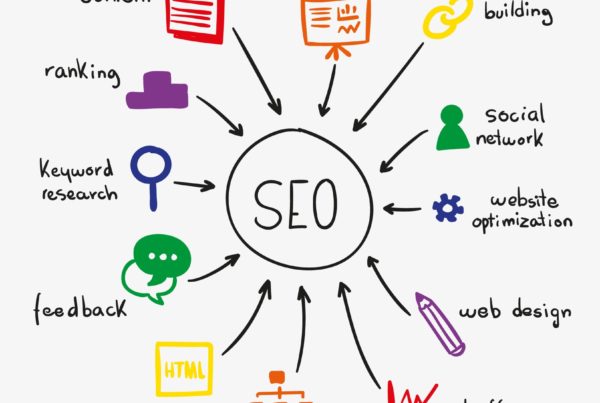With just 2 months to 2022, brands and marketers are already in the process of drafting their digital marketing strategies for 2022. This is the time when you run an analysis for your activities in 2021 and learn more about what worked and what didn’t. COVID-19 has changed a lot about how we were used to see and understand trends. Also, its time to think about what does 2022 holds for you? What are the new digital marketing trends for 2022 and how you can use them?
An infographic from Outgrow shares about the evolution of marketing and its future. Here is the summary of the infographic:
Marketing orientation and their pre-dominant eras
- 1980s – 1930s: Product orientation
- 1930s – 1950s: Selling orientation
1950s – 1990s: Marketing orientation - 1990s – Present: Holistic orientation
The future of marketing:
- Use of interactive content
- Conquering the market, instead of building the brand
- 4Es – Engagement, Experience, Exclusivity, and Emotion
- Influencer marketing is the new trend
- Integrating AI with customer experience
- Creating social media stories
Here is the infographic:
Now that you have time-traveled through the history of marketing, here are the 6 Digital Marketing Trends for, which could catapult the success of your business.
1) Use of interactive content:
No doubt that content is the king, when it comes to digital marketing, however with changing times, the future of content marketing relies upon creating interactive content. It can be in the form of quizzes, polls, interactive maps, videos, GIFs, calculators, games etc.
81% of marketers think that interactive content grabs the attention of website visitors, making it a powerful marketing technique. Also, 79 percent of marketers agree that interactive content enhances the reputation of a brand’s message and hence generates more leads.
If compared to digital ads like banner ads, pop-ups etc., interactive content is a better digital marketing tool. Considering over 80% of the digital ads are ignored by the visitors are ignored by visitors due to a phenomenon known as banner-blindness. Millennials are a lucrative customer segment for many companies and about 63 percent of them use ad-blocking or add-ons and extensions for ad-blocking. In this case, interactive content passes through the filters and proves to be a more effective digital marketing tool. So, interactive content is going to be one of digital marketing trends for 2021. How are you planning to use it?
2) Conquering the market, instead of just building a brand:
It is a hard fact but most consumers wouldn’t care if 73 percent of brands disappeared for good. People will simply turn to another brand in the market.
So, what should brands do to not to end-up in these 73 percent?
It’s not that simple but we can start by saying that, brands should focus more on improving lives of their consumers, contributing to local and international communities and respond to real needs, rather than just pushing for their products.
For example, here is an ad campaign from Coke, made wonderfully, touching important issue to our society. In this campaign, a can of coke is just an addition.
Is your brand going to embrace this digital marketing trend for 2021, or not?
3) 4E’s of marketing replace the 4P’s of Marketing
Product, Price, Place, Promotion, a.k.a 4Ps’s of marketing, we all have read about. However, the 4P’s are no longer the right approach in the current market.
So, what happened to 4P’s of Marketing Theory?
It got replaced by 4E’s i.e., Engagement, Experience, Exclusivity, and Emotion.
4Es Theory is one of the new digital marketing trends for 2020. The growth of 4E’s model has evolved with the growth of digital media marketing. The marketers are able to gather detailed information about their consumer behavior, preferences, interests, influences etc. With the help of this data, marketers make personalized marketing messages.
However, consumers now are supplied with copious promotional information. So, brands need to go the extra mile in customer services to distinguish their brand in this cutthroat market competition. Brands need to show that they care about their clients if they want to develop firm relations with them and retain them.
So, marketers are focusing on conquering the market instead of building the brand. For e.g. see how WestJet spread happiness by giving personalized gifts to more than 250 passengers who made their wishes before departure.
4) Influencer marketing – make it integral
Influencer marketing worked well in the past and will continue in 2021 too.
70% millennials look for recommendations from their peers or social proof through influencer marketing before making a product purchase decision.
Here are some findings from a survey by Collective Bias, that can help you in re-evaluating your influencer marketing strategy:
- 30 percent of consumers are more likely to buy a product recommended by a non-celebrity blogger.
- Facebook posts influence 19% of customer purchase decisions.
- YouTube influences 18 percent of customers regarding their purchases.
- YouTube influences 13.9 percent of women and 22.8 percent of men consumers on their purchases.
- 60 percent of consumers have been influenced by a social media post or a blog review while shopping in-store.
- Men are two times more likely than women to be influenced by blog reviews while shopping in-store.
- 15.4 percent of women and 34.4 percent of men are influenced by blog reviews when it comes to consumer electronics purchases.
So, if you have not made influencer marketing an integral part of your marketing already, the time is now.
5) Artificial Intelligence – Brands will embrace it
Marketers have already been discussing the possibilities of integrating AI into the customer experience. AI is still in its infancy however, 2021 is the year when AI will make a noticeable difference to marketers.
Social media analytics is only as valuable as the data behind it. AI can do consumer behavior and search patterns analysis, utilize the data collected from social media platforms and blog posts, websites, chatbots etc. and help brands to understand how consumers are finding their products and services.
Artificial intelligence also offers information and tips to users by getting into conversations. For eg., if you ask SIRI to make a search, SIRI will come up with 2-3 relevant searches, and if your website is optimized for it, your CTRs can go high.
Almost one-third of the 3.5 billion searches performed on Google every day are voice searches now, with personal assistant devices leading the way. Gartner, 25% of customer service will use chatbot technology by 2020, up from less than 2% in 2017, says Gartner. There’s much more to come. Areas to watch include voice recognition and image, video recognition and real-time data evaluation.
6) Social media stories – a new opportunity
Stories are quietly evolving in the social media world, fundamentally changing how we share and consume content on social media. Stories creation and consumption is up 842 percent since early 2016.
For companies that rely on social media to reach their customers, this presents brand new opportunities—and some real challenges. With stories format already evolving and introducing new features like more sophisticated stickers, face filters, integration of AR functionality that lets users create their own interactive doodles; stories aren’t going anywhere.
According to the latest research, Stories are growing 15 times faster than newsfeeds. More than 1 billion users are already hooked on the format. According to a Techcrunch report, WhatsApp’s Stories now have over 450 million daily users. Instagram’s have over 300 million. Facebook Messenger’s had 70 million in September.
So, are you ready to handle what the year 2021 holds for digital media marketing? Share in comments.










